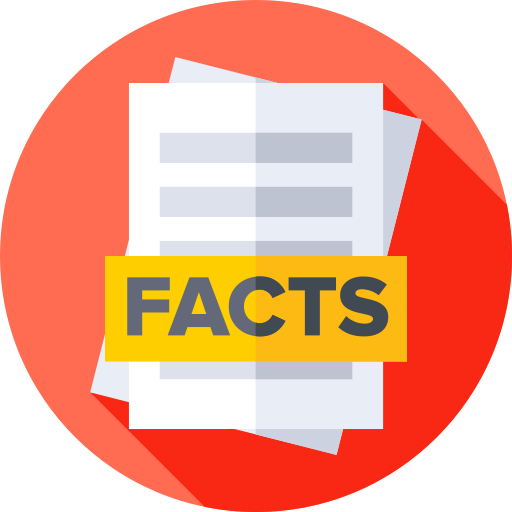Norway - Geography

Here, let us take a look at the Geography of Norway. About two-thirds mountains; some 50,000 islands off its much-indented coastline; strategic location adjacent to sea lanes and air routes in North Atlantic; one of the most rugged and longest coastlines in the world. Mother's mean age at first birth is 29.8 years (2020 est.) (Note: data is calculated based on actual age at first births), whereas, the Maternal mortality ratio is 1 deaths/100,000 live births (2023 est.)
Geographical data of Norway
| Location | Northern Europe, bordering the North Sea and the North Atlantic Ocean, west of Sweden |
|---|---|
| Geographic coordinates | 62 00 N, 10 00 E |
| Map references | Europe |
| Tarrain | glaciated; mostly high plateaus and rugged mountains broken by fertile valleys; small, scattered plains; coastline deeply indented by fjords; arctic tundra in north |
| Natural Resources | petroleum, natural gas, iron ore, copper, lead, zinc, titanium, pyrites, nickel, fish, timber, hydropower |
| Natural Hazards | rockslides, avalanches volcanism: Beerenberg (2,227 m) on Jan Mayen Island in the Norwegian Sea is the country's only active volcano |
| Irrigated Land | 337 sq km (2016) |
| Major rivers (by length in km) | |
| Major aquifers | |
| Land Boundaries | 2,566 km |
| Border Countries | Finland 709 km; Sweden 1,666 km; Russia 191 km |
| Coastline | 25,148 km |
| Climate | temperate along coast, modified by North Atlantic Current; colder interior with increased precipitation and colder summers; rainy year-round on west coast |
| Area | |
| Total Area | |
| Land Area | 304,282 sq km |
| Water Area | 19,520 sq km |
| comparative Area | slightly larger than twice the size of Georgia; slightly larger than New Mexico |
| Maritime Claims | |
| Territorial sea | 12 nm |
| Contiguous zone | 10 nm |
| Exclusive economic zone | 200 nm |
| Continental shelf | 200 nm |
| Elevations | |
| Highest point | Galdhopiggen 2,469 m |
| Lowest point | Norwegian Sea 0 m |
| Mean elevation | 460 m |
| Land Use | |
| Agricultural land | 2.7% (2023 est.) |
| Agricultural land: arable land | arable land: 2.2% (2023 est.) |
| Agricultural land: permanent crops | permanent crops: 0% (2023 est.) |
| Agricultural land: permanent pasture | permanent pasture: 0.5% (2023 est.) |
| Forest | 33.3% (2023 est.) |
| Other | 64% (2023 est.) |
Population Distribution
Most people live in the south; population clusters are found along the North Sea coast in the southwest and Skaggerak in the southeast; the interior areas of the north remain sparsely populated
People and Society
In Norway, the different Ethnic groups are such that we have: Norwegian 81.5% (includes about 60,000 Sami), other European 8.9%, other 9.6% (2021 est.)
| Population | |
|---|---|
| Pop growth rate | 0.59% (2024 est.) |
| Birth rate | 10.4 births/1,000 population (2024 est.) |
| Death rate | 8.4 deaths/1,000 population (2024 est.) |
| Health expenditure | |
| Physicians Density | |
| Hospital bed Density | 3.4 beds/1,000 population (2020 est.) |
| Total fertility rate | 1.57 children born/woman (2024 est.) |
| Gross reproduction rate | 0.77 (2024 est.) |
| Contraceptive prevalence rate | |
| Est married women (ages 15-49) | 50.2% (2023 est.) |
| Literacy | |
| Education expenditures | |
| Net Migration rate | 3.9 migrant(s)/1,000 population (2024 est.) |
| Nationality | Norwegian | Norwegian(s) |
| Languages | |
| Religions | Church of Norway (Evangelical Lutheran - official) 67.5%, Muslim 3.1%, Roman Catholic 3.1%, other Christian 3.8%, other 2.6%, unspecified 19.9% (2021 est.) |
| Age Structure | |
| 0-14 years | 16.3% (male 461,979/female 438,243) |
| 15-64 years | 64.5% (male 1,820,692/female 1,734,818) |
| 65 years and over | 19.1% (2024 est.) (male 498,301/female 555,700) |
| Dependency Ratios | |
| Total dependency ratio | 55 (2024 est.) |
| Youth dependency ratio | 25.3 (2024 est.) |
| Elderly dependency ratio | 29.6 (2024 est.) |
| Potential support ratio | 3.4 (2024 est.) |
| Median Age | |
| Total | 40.8 years (2024 est.) |
| Male | 40.1 years |
| Female | 41.5 years |
| Urbanization | |
| Urban population | 84% of total population (2023) |
| Rate of urbanization | 1.32% annual rate of change (2020-25 est.) |
| Major urban areas (Pop) | 1.086 million OSLO (capital) (2023). |
| Sex Ratio | |
| At birth | 1.05 male(s)/female |
| 0-14 years | 1.05 male(s)/female |
| 15-64 years | 1.05 male(s)/female |
| 65 years and over | 0.9 male(s)/female |
| Total population | 1.02 male(s)/female (2024 est.) |
| Infant Motality | |
| Total | 1.8 deaths/1,000 live births (2024 est.) |
| Male | 2.1 deaths/1,000 live births |
| Female | 1.5 deaths/1,000 live births |
| Life Expectancy at birth | |
| Total population | 82.9 years (2024 est.) |
| Male | 81.3 years |
| Female | 84.6 years |
| Drinking Water Sources | |
| Improved: urban | urban: 100% of population (2022 est.) |
| Improved: rural | rural: 100% of population (2022 est.) |
| Improved: total | total: 100% of population (2022 est.) |
| Unimproved: urban | urban: 0% of population (2022 est.) |
| Unimproved: rural | rural: 0% of population (2022 est.) |
| Unimproved: total | total: 0% of population (2022 est.) |
| Sanitation facility acess | |
| Improved: urban | urban: 100% of population (2022 est.) |
| Improved: rural | rural: 100% of population (2022 est.) |
| Improved: total | total: 100% of population (2022 est.) |
| Unimproved: urban | urban: 0% of population (2022 est.) |
| Unimproved: rural | rural: 0% of population (2022 est.) |
| Unimproved: total | total: 0% of population (2022 est.) |
| Alcohol consumption per capita | |
| Total | 6.05 liters of pure alcohol (2019 est.) |
| Beer | 2.63 liters of pure alcohol (2019 est.) |
| Wine | 2.23 liters of pure alcohol (2019 est.) |
| Spirits | 1 liters of pure alcohol (2019 est.) |
| Other alcohols | 0.19 liters of pure alcohol (2019 est.) |
| Tobacco use | |
| Total | 12% (2025 est.) |
| Male | 12.6% (2025 est.) |
| Female | 11.3% (2025 est.) |
| Child marriage | |
| Women married by age 15 | 0% (2022) |
| Women married by age 18 | 0% (2022) |
Demographic profile
All Important Facts about Norway
Want to know more about Norway? Check all different factbooks for Norway below.









